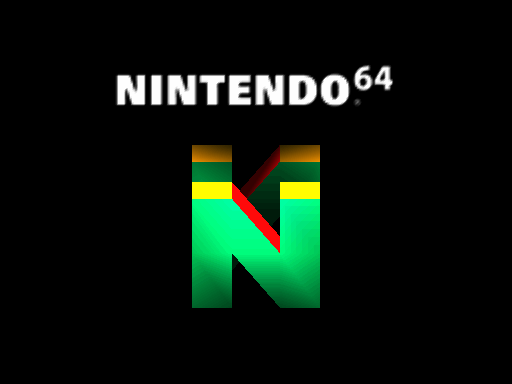Thoughts, opinions, and other things I find from the internet.
Last active 3 hours ago
Don't wanna be here? Send us removal request.
Text

First day on the job as treasure hunters didn't go smoothly
7K notes
·
View notes
Text
A Note About Project M 3.6 Content Integrity & Legacy TE
[originally posted on 5/9/2018, posting here for posterity]

Last night we tweeted a tease for the next version of Legacy TE, something we've been very excited about for a very long time. We're happy to finally break the silence!
Before we reveal anything about it, however, we'd like to visit a topic of recent interest. Specifically around modifying tournament legal stages in Project M 3.6 builds.
Our stance has never changed from Legacy TE's conception: characters and stages from 3.6 are the only acceptable versions of Project M content for tournament use. TE was made with this ethos in mind, and has never wavered, despite numerous attempts by the community to use unfinished leaked Project M content or community-modified deviations. We'll continue to make sure the integrity of Project M 3.6's content is intact.
In some discussions on the Project M subreddit and other places, there has been some confusion over what types of changes you can make to the game, and what kinds of changes should be considered acceptable. To help clarify this issue, we'd like to supply a few key definitions that will help distinguish between the many different kinds of "modifications" one can possibly make to Project M:
Aesthetic changes: visual or audio changes that don't affect gameplay, but can sometimes adjust players' perceptions and at worst be deceptive or distracting. This is a gray area, as some players use particular audio or visual cues when playing that can potentially be disrupted.
Net-new inclusions: additions to the game that simply give more of the same in a careful way, as to never replace key tournament content or result in any kind of gameplay change. i.e. Kirby's 9th and 10th costume options, alt stages
Quality of Life feature additions: net-new additions to the game that enhance non-gameplay changing features. ie. working replays, edit controls from the CSS.
Crash fixes: file edits that don't necessarily change aesthetics, nor in-game behavior, but simply correct potential game crashes. Examples are memory leak fixes, or Kart ROB’s Clear Mode edit.
Hardware-viability balance change: Changes to the game that only directly affect hardware-related aspects of the game to make the experience more consistent across every type of hardware i.e. UCF
Gameplay-changing modifications: any edit that would result in gameplay changes, including but limited to: character moveset changes, some PSA adjustments, some animation tweaks, stage collision changes, blast zone changes, etc
It's our belief that of the 6 possible types of changes above, only definitions 1-5 are worth considering. Changes as defined by definition #6 are never permissible, and have no place in a PM 3.6 build.
Why, you might ask? What's wrong with "balancing" a stage's blast zone or "improving" a collision? Well the first question to ask is, who truly has the authority to make that call? The Project M Development Team have been disbanded since December of 2015, so there is no true authority to be making these changes. In light of this reality, no matter how "good" the change might be, no gameplay-changing modifications should be made.
Let's ignore that for a second, and assume a group comes together and assumes the role of "authority" of the game's development and get away with it. Let's also assume the group came to a consensus where all parties were satisfied over what changes to implement. A push improperly executed will leave the community split, frustrated, and confused. There's a branding issue there, too. What "version" are each of these edited stages? They can't be called 3.6 stages. They can't be called 3.61 stages either. So there really is no good title for them. Good luck explaining this all to new players or less involved community members.
Not to mention this opens the floodgates to variety of other possible changes that can be argued to be made, including character balance changes, or additional characters on the roster.
This only scratches the surface of potentially problematic outcomes that could result from such a change.
The "gameplay update" debate has been a contentious topic since the PMDT disbanded in 2015. There's been a desire to correct mistakes left in 3.6, and not for no reason: it's not a perfect game. But what Smash game is perfect? Is disrupting a healthy meta 3 years in the making really worth a few little tweaks?
Since this is a longer post, we'll give you a TL;DR summary: Legacy TE is committed to being faithful to Project M 3.6 as always. This means we will reject any non-3.6 variations of PM content and will not include them in any build.
3 notes
·
View notes
Text
Thank you for sharing!



Was servicing my old devices and decided to take some pictures.
39 notes
·
View notes
Text
Updated my theme
Now it's a Zune HD.
😍
0 notes
Text
David's Bullcr*p Marketing Video
This video is bullcr*p, but at least it's in the right aspect ratio. 👍
1 note
·
View note
Text
Super Smash Bros. Melee 20th Anniversary
On November 21, 2001, Super Smash Bros. Melee released in Japan on Nintendo GameCube.
20 years later, it remains my favorite video game of all time.
I created a tribute and released it today to celebrate the game and its community:
youtube
Last week, I created an animated concept video for what the opening movie from the game may have looked like if it had included all of the playable characters:
youtube
Earlier this year, I also created a documentary about the development story of the game you can view here:
youtube
If you’re interested in other videos I’ve created about the game, check out my entire Super Smash Bros. Melee YouTube playlist! There’s a lot more content to explore.
If you’ve been impacted by this game, and would like to post in celebration of it as well, #Melee20th is the hashtag we’re using.
2 notes
·
View notes
Text
Charizard and Diddy Kong in Melee?!
The Akaneia Build - Version 0.8 Update Trailer
youtube
This trailer, lovingly created in the style of Melee Special Movie, showcases the three new-to-Melee characters, Wolf, Diddy Kong, and Charizard, while also sharing the new costumes and game modes.
You can also hear a unique Star Wolf theme that was created by @Sarveproduction on Twitter and it sounds OUTSTANDING! It feels right at home in Melee.
Altogether a wonderfully constructed trailer that feels like it could have been made by HAL Laboratory in 2001.
Two New Characters Join the Fight
Based on their Project M counterparts, Charizard and Diddy Kong join Wolf and the rest of the roster in the latest Akaneia build for Melee.
Of course they’ve been given the Melee design treatment to fit in with the rest of the cast.
Some liberties were taken with the special moves, like Charizard’s side B and up B, and giving him Rock Smash on down B. Diddy Kong’s side B is simplified to be more “Melee-like.” All-in-all, they fit in well.
Right now Charizard’s dash dance doesn’t rumble quite the way I’d expect it to - but UnclePunch and team are aware.
With that minor complaint aside, these additions are pretty cool.
New Costumes + New Game Modes
A slew of new costumes are available for the whole cast!
Tag, All Star Versus, and Turbo Melee modes have been added to Melee’s new options under the added “Games” menu option. Note, these will not appear if you’re using Slippi.
Volleyball, Peach’s Castle, and Wolf got some tweaks also.
Wolf and Diddy Kong’s design are based on Smash 2‘s models.
Shout out to KTH, ConnorRentz, MaZone, Super4ng, Pik, and duccW, for their work on this update!
See the video at the top of this post to see the trailer they released for this update. It’s very well done!
* Edit, Team Akaneia on Twitter clarified that Project M was not used as a reference for the new fighters, rather they used official releases and tweaked based on their own preferences.
2 notes
·
View notes
Text
Super Smash Bros. Melee DLC Character Calls - Featuring Dean Harrington!
For the Fans
Voice actor Dean Harrington, voice of the announcer, Master Hand, and Crazy Hand in Super Smash Bros. Melee, lent his talents to us for Smash again in 2016 when he met with MelonSpeedRuns and I to record some lines. He did this pro bono and has been very supportive of the scene.
Yesterday, jfaz remastered the tracks to match the in-game Melee sounds even more closely!
You can download them here: http://dean.melee.tv/
Here’s the GitLab project provided by jfaz.
Please support Dean Harrington if you can for creating this with us.
youtube
Dean Harrington Interview
SourceGaming interviewed Dean Harrington shortly after he got into contact with me and it’s a great listen!
He begins to talk about working with us at 40:50 in the video.
youtube
We can’t thank Dean enough for providing us with these awesome voice lines!
1 note
·
View note






